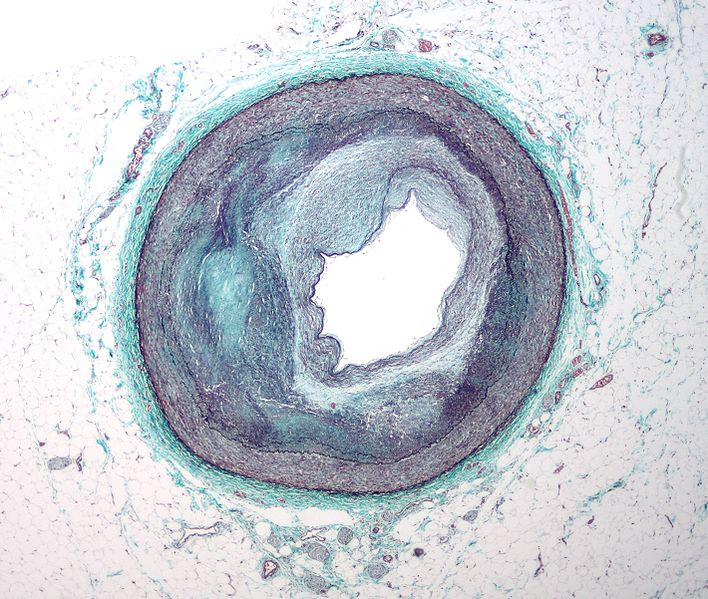Finding heart attacks before they happen
A way to pinpoint damage in blood vessels that could cause a future heart attack has been developed by UK scientists.
Heart attacks are the leading cause of death worldwide. They occur when the coronary arteries, which supply blood to the heart itself, become blocked.
This usually happens when a patch of the vessel wall, damaged by a build up of cholesterol referred to as an atheromatous plaque, ruptures and triggers a blood clot to form.
This limits blood flow and starves the heart muscle of vital nutrients and oxygen leading to scarring and irreversible damage.
At the moment, doctors can image the coronary arteries using x-rays and dye injected into the bloodstream, and also ultrasound techniques.
These approaches can reveal only where arteries are narrowed, not the "hotspots" where they are most at risk of rupture and blockage.
Now, Imperial College cardiologist Ramzi Khamis and his colleagues have developed an antibody that is coupled to a fluorescent marker.
Injected into the bloodstreams of experimental mice with the rodent equivalent of human arterial disease, these antibodies, called LO1-750, homed in on and labelled up those atheromatous plaques that - subsequent analysis showed - were at greatest risk of rupture.
The antibodies recognise a form of cholesterol known as oxidised LDL, which accumulates in the walls of diseased arteries and in greater abundance is linked to a higher risk of plaque rupture and heart attack.
Once the antibodies are bound, a cannula (fine tube) threaded into the coronary arteries can be used to shine laser light onto the wall of the artery, which makes the fluorescent dye on the antibody glow up and release near-infrared light that a camera outside the body can see.
This means that heart attacks waiting to happen in the artery wall can be identified and treated before they become a problem.
At the moment, the gold standard treatment is to inflate a small balloon against the blockage inside a clogged artery, and then prop open the vessel using a wire cage called a stent, which is inserted down a wire temporarily placed inside the artery.
Khamis even speculates that in the future this might not be necessary.
"We're now working on a way to use these antibodies also to deliver drugs to the diseased areas that need them," he explains.
"Because the antibody is targeting plaques specifically, we can also couple to it therapeutic molecules like anti-inflammatory agents that will damp down the disease process in the artery wall and prevent further damage or even reverse it."
The initial experiments, which are presented this week in the journal Nature Scientific Reports, have been conducted using mice and rabbits, and LO1-750 is a mouse antibody.
"The next step is to completely humanise LO1-750 to make it resemble a normal human antibody rather than the mouse equivalent," says Khamis. "Then we are close to getting this into patients."
The antibody does work successfully when tested on human post-mortem specimens.
"Give it 5 years. I'm optimistic!"





Comments
Add a comment